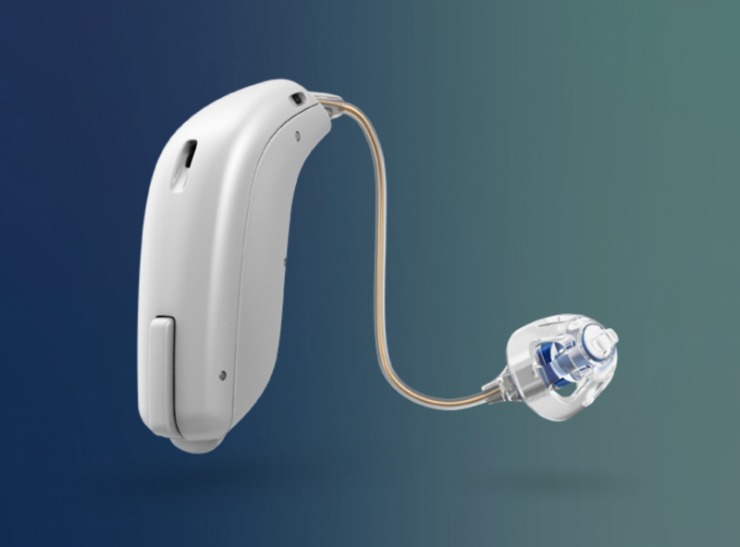For rechargeable hearing aids, lithium batteries last about 4 to five years. Just like with smartphones, the battery lifespan will get shorter the longer you personal the gadget. If you notice your battery draining faster than traditional, speak to your hearing care supplier about whether or not new rechargeable batteries will assist, or when you should get new devices. Digital circuitry in hearing aids supplies audiologists with larger flexibility to regulate the gadget to meet the user’s particular needs and listening environments. These aids can be programmed to focus on sounds from a sure course, resulting in a more personalised listening to experience. Both analog and digital circuitry could be utilized in various listening to aids.
Although listening to aids can make an enormous distinction in addressing problems with listening to, they can additionally take some getting used to. For extra information on the benefits of using listening to aids, please see Benefits of Hearing Aids | Lexie Hearing. You will also find useful info by visiting What to Expect When You Get Your Hearing Aids. Several hearing companies are answerable for the development and distribution of listening to aids.
Prolong exposure to loud noises can additional harm your hearing. Also get recommendation from your doctor to be certain that hearing aid is the answer to your listening to loss. We only work with essentially the most educated specialists in the business. The pages to the right present details about hearing loss and the way hearing aids might help. Due to their small measurement, ITE aids may not have the flexibility to provide sufficient amplification for these with severe listening to loss.
They truly solely amplify sounds that you just want and never sounds that you do not. Most people have listening to loss at a few of these frequency ranges, but not all. Hearing aids must be programmed to amplify solely the frequency ranges that you want and do it with precision.Most circumstances of listening to loss are within the High-Frequency ranges. Dr. Emily Smith is a lead audiologist at hear.com, a world chief in listening to care and the biggest on-line retailer of medical-grade hearing aids. Dr. Smith graduated from the University of Oklahoma Health Sciences Center and has performed hundreds of Teleaudiology appointments to help individuals find larger access to hearing healthcare. Outside of audiology, Dr. Smith enjoys spending time mountaineering, skiing, and traveling together with her friends and family, and has two canines, Baxter and Piper.
Types of Hearing Aids
Those with severe hearing loss are extra doubtless to want a doctor’s help to handle their communication wants. Regardless of your fashion, hearing aids usually work the identical way. The goal is at all times to amplify sounds while filtering out certain forms of noise to enhance hearing and communication. “We all need these merchandise to be more inexpensive,” says DeMari.
Read more about Best Hearing Aids for Seniors here.
Do all hearing aids work the same way?
Digital listening to aids are geared up with more than one listening program. Settings embody conditions where there’s a lot of background noise as properly as conditions the place there’s little to no background noise. Hearing aids with a number of programs could automatically change between applications or may be manually modified by the individual.
Should I ask my healthcare provider about hearing aids?
How advanced these capabilities get depend on the know-how degree of the listening to assist. A receiver-in-canal (RIC) hearing help is likely one of the hottest types and delivers sound via a tiny speaker that rests inside the ear canal. Sound is electronically transmitted from the listening to aid to the speaker through a discreet plastic-encased speaker wire. The speaker, typically referred to as the “receiver,” allows sound to move into the ear canal. RIC listening to aids are designed for folks with mild to severe listening to loss. No matter if the listening to aid has one or two, the microphones will acquire the sound from your setting, which is then transformed into a digital signal.
The speaker then converts the sign again into sound waves, providing a louder, clearer sound that improves hearing and makes speech easier to know. In-the-ear (ITE) listening to aids are smaller and fit inside the bowl of the ear, making them much much less visible than BTE fashions. Completely-in-the-canal (CIC) hearing aids are even much less seen than ITE models as they are custom made to fit snugly inside your ear canal. Finally, Invisible-in-the-canal (IIC) listening to aids are almost invisible and solely those who know the place to look for them will truly have the ability to see them. All most of these hearing aids present improved sound high quality and amplified volume so customers can take advantage of out of their environment.



